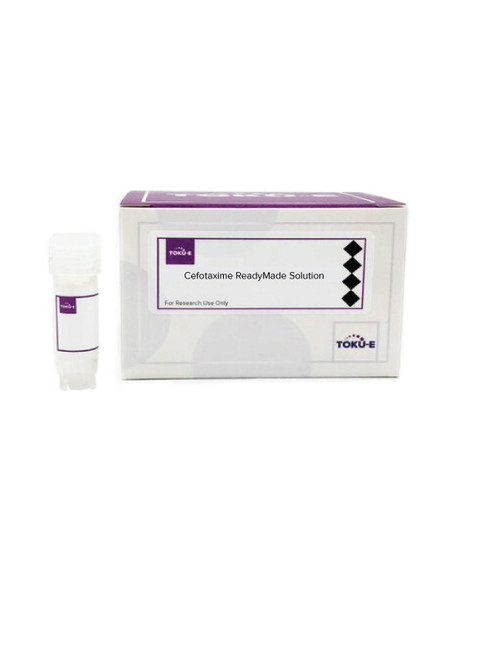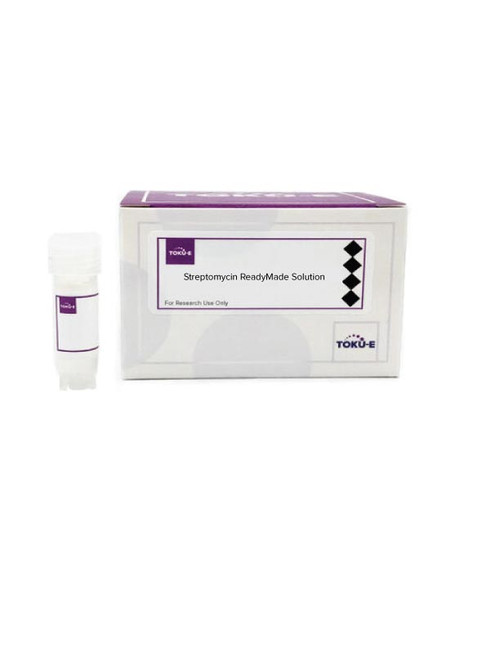-
Detailed Description
CAS Number: 4800-94-6
Molecular Formula: C17H16N2Na2O6S
Molecular Weight: 422.36
Mechanism of Action: Carbenicillin interferes with PBP (penicillin binding protein) activity otherwise involved in the final phase of peptidoglycan synthesis. PBPs are enzymes which catalyze a pentaglycine crosslink between alanine and lysine residues. Without a pentaglycine crosslink, the integrity of the cell wall is severely compromised ultimately leading to cell lysis. Resistance to β-lactams is commonly due to cells containing plasmid-encoded β-lactamases.
Storage Conditions: −20°C
Tariff Code: 2941.10.5000
-
Specifications
Form: Solution
Source: Semi-synthetic
-
References
References:
Bush K and Bradford PA (2016) B-Lactams and B-Lactamase inhibitors: An overview. Cold Spring Harb.Perspect. Med 6(8): pii: a025247 PMID 27329032
Gao J et al (2015) CRISPR/Cas9-mediated targeted mutagenesis in Nicotiana tabacum. Plant Mol. Biol 87(1):99-110 PMID 25344637
Matsuda N, Isuzugawa K, Gao M, Takshina T and Nishimura K. (2004) Development of Agrobacterium-mediated transformation system in pear cultivars with low-regeneration frequency. Hortsci. 39(4)
Pitout JD, Sanders CC, Sanders WE (1997) Antimicrobial resistance with focus on beta-lactam resistance in Gram-negative bacilli. Am J Med 103:51-59 PMID 9236486
Carbenicillin ReadyMadeTM solution is provided as a sterile filtered solution of Carbenicillin Disodium formulated in 20~30% ethanol at a concentration of 100 mg/ml. It has been filter-sterilized using a 0.22 μm filter.
Carbenicillin Disodium is a carboxypenicillin antibiotic routinely used for gene selection. The compound interferes with peptidoglycan synthesis, thus it can also be used to study the role of penicillin-sensitive transpeptidases in the formation of cell walls. The carboxycillins are susceptible to degradation by β-lactamase enzymes. Carbenicillin is typically used at a concentration of 50-100 μg/ml.
We also offer:
CAS Number: 4800-94-6
Molecular Formula: C17H16N2Na2O6S
Molecular Weight: 422.36
Mechanism of Action: Carbenicillin interferes with PBP (penicillin binding protein) activity otherwise involved in the final phase of peptidoglycan synthesis. PBPs are enzymes which catalyze a pentaglycine crosslink between alanine and lysine residues. Without a pentaglycine crosslink, the integrity of the cell wall is severely compromised ultimately leading to cell lysis. Resistance to β-lactams is commonly due to cells containing plasmid-encoded β-lactamases.
Storage Conditions: −20°C
Tariff Code: 2941.10.5000
Form: Solution
Source: Semi-synthetic
References:
Bush K and Bradford PA (2016) B-Lactams and B-Lactamase inhibitors: An overview. Cold Spring Harb.Perspect. Med 6(8): pii: a025247 PMID 27329032
Gao J et al (2015) CRISPR/Cas9-mediated targeted mutagenesis in Nicotiana tabacum. Plant Mol. Biol 87(1):99-110 PMID 25344637
Matsuda N, Isuzugawa K, Gao M, Takshina T and Nishimura K. (2004) Development of Agrobacterium-mediated transformation system in pear cultivars with low-regeneration frequency. Hortsci. 39(4)
Pitout JD, Sanders CC, Sanders WE (1997) Antimicrobial resistance with focus on beta-lactam resistance in Gram-negative bacilli. Am J Med 103:51-59 PMID 9236486








